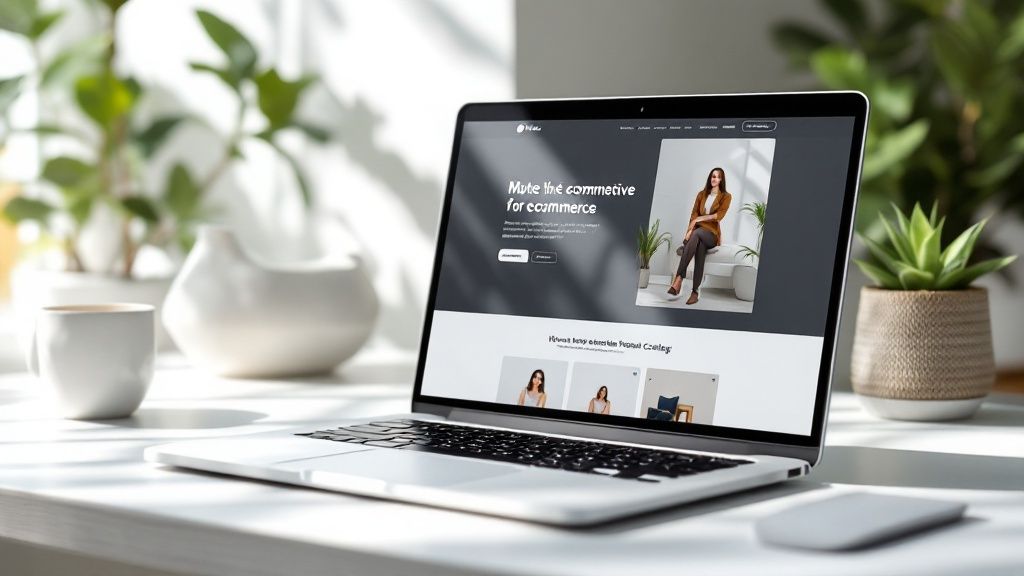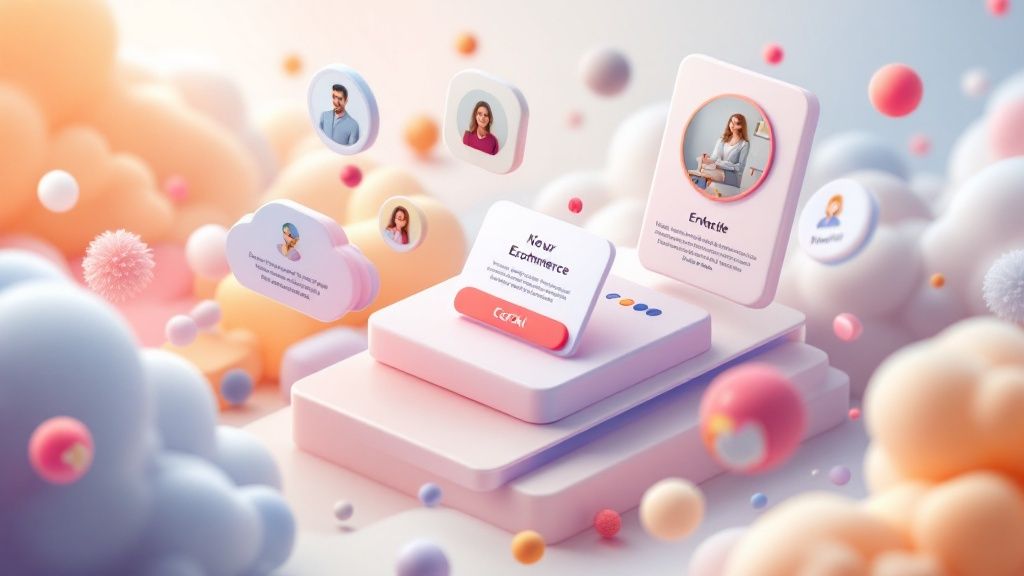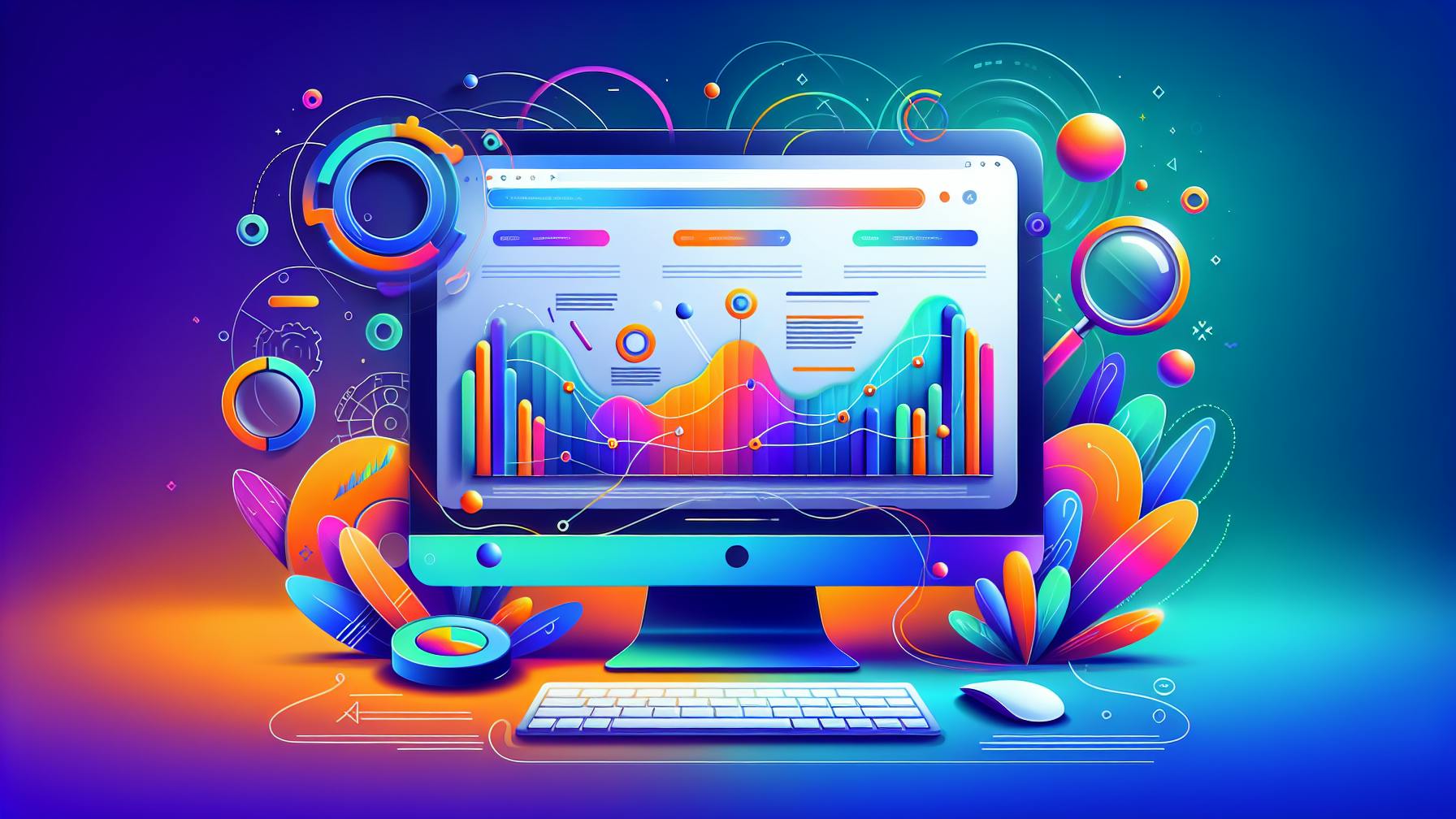E-Commerce Landing Pages: Crafting High-Converting Pages for Maximum Sales
November 13, 2024

Introduction
E-commerce landing pages are specialized web pages with a laser focus: converting visitors into customers. They're like the expert sales representatives of your online store, unlike your homepage, which provides a general brand overview. Landing pages cater to specific customer needs, guiding them towards desired actions, like making a purchase or signing up for a promotion. This targeted approach is key to unlocking your online sales potential.

The Importance of Dedicated Landing Pages
Imagine a customer clicking an ad for a particular product. Instead of landing on a busy homepage, a dedicated landing page presents precisely what they sought. This streamlined journey significantly increases conversion chances. Furthermore, landing pages offer valuable behavioral insights. Tracking metrics like conversion and click-through rates reveals what resonates with your audience, allowing you to refine marketing strategies. This means landing pages aren't just about immediate sales; they fuel long-term growth.
Optimizing for Conversions
Simply having a landing page isn't enough. It needs to be optimized, much like a salesperson needs the right tools and training. Your landing page requires carefully considered elements like compelling headlines, high-quality product images, persuasive text, and clear calls to action. This brings us to the core components of effective e-commerce landing pages.
Essential Elements of High-Converting E-commerce Landing Pages
Creating a landing page is just the first step. Like a well-equipped store, your landing page needs specific features designed to turn visitors into buyers. This involves understanding online shopper psychology and crafting a page that addresses their needs and desires.

Headlines and Copy that Convert
First impressions matter. Your headline should instantly grab attention and communicate value. It's the digital equivalent of an enticing storefront window. For instance, instead of "New Shoes," try "Experience Unmatched Comfort with Our New Running Shoes." Following the headline, concise copy should focus on product benefits, addressing customer pain points and offering solutions. This means showcasing differentiating features and using persuasive language.
Visuals that Speak Volumes
Online shoppers rely heavily on visuals, just like in a physical store. High-quality images and videos are vital for showcasing products and building trust. Consider including product demonstrations or lifestyle images to help visitors envision themselves using the product. For example, a blender landing page could feature a video demonstrating its ease of use and versatility.
Clear Calls to Action and a Smooth Checkout
Once you've sparked interest, guide visitors toward action. A clear call to action (CTA) is crucial. Use action-oriented phrases like "Shop Now," "Get Your Discount," or "Learn More." A streamlined checkout is equally important. A complex checkout can lead to abandoned carts. Minimize required steps and offer various payment options. Learn more in our article about How to master high-converting Shopify landing pages.
Building Trust with Social Proof
Building trust online is paramount. Incorporating social proof, such as testimonials, reviews, and trust badges, can greatly increase conversions. These elements offer reassurance, demonstrating positive experiences with your product or brand. For example, placing five-star reviews near your CTA can significantly impact conversions. Carefully crafting these elements transforms your landing pages into powerful sales tools.
Best Practices for Design and Layout
Including the right elements is a good start, but effective presentation is equally crucial. Design and layout guide visitors toward the desired action, ultimately influencing conversions. Your landing page is like a physical storefront; a well-organized and appealing store encourages browsing and purchases.
Visual Hierarchy and Clarity
Structure your page so the most important information stands out. Just like bold text in a document, visual hierarchy directs attention to key elements like headlines, product images, and CTAs. For example, a large, clear headline at the top and a contrasting CTA button can effectively guide visitors. Use whitespace strategically to avoid overwhelming the visitor, balancing information with a clean design.
Consistent Branding and Messaging
Maintain a consistent brand identity on your landing page, reflecting your overall brand aesthetic. Use consistent fonts, colors, and imagery. This reinforces brand recognition and builds trust. Your landing page should feel like a natural extension of your website. Messaging should be clear, consistent, and focused on specific product benefits. For example, if your brand emphasizes sustainability, reflect this in your visuals and language.
Intuitive Navigation and User Flow
A landing page should have intuitive navigation, like a well-organized store. Structure your page logically with a prominent CTA, guiding visitors from headline to product details to checkout. You might be interested in: How to master e-commerce landing pages design. Ensure mobile responsiveness, catering to the increasing number of mobile shoppers. Prioritizing these design practices transforms your landing pages into effective conversion tools.
Mobile Optimization Strategies
Optimizing for mobile is essential. With most shoppers using smartphones, a mobile-friendly landing page is critical for success. A non-responsive page alienates mobile users and limits your potential.

Responsive Design for a Seamless Experience
Responsive design is foundational. It ensures your landing pages adapt to different screen sizes, providing a consistent experience. A page that looks great on a desktop but is unusable on a smartphone needs responsive design. This adjusts layout, fonts, and images, creating a smooth experience that encourages mobile purchases.
Page Load Speed: A Critical Factor
Page load speed is paramount on mobile. Users are often on the go and have little patience for slow loading. Even a few seconds can lead to frustration and lost sales. Optimize images, minimize HTTP requests, and use browser caching to improve mobile load speed. This keeps visitors engaged and minimizes bounce rates. Consider a Content Delivery Network (CDN) to further reduce load times.
Touch-Friendly Design
Touchscreen navigation differs from using a mouse. Mobile-optimized pages need touch-friendly design. Use larger, easily tappable buttons and links, avoiding elements requiring precise clicks or hovering. Simplify navigation for easy access to information. Think of it like designing a store with wider aisles – it creates a smoother shopping experience. Intuitive mobile navigation enhances the user experience and increases conversions, leading to the next optimization step: A/B testing.
A/B Testing and Optimization
A/B testing, like scientific experimentation, lets you compare different landing page versions to see what works best. This iterative process is essential for maximizing conversions. It's like fine-tuning an instrument; small adjustments can significantly improve performance.
Data-Driven Decisions
A/B testing provides valuable data to inform your optimization strategies. Make decisions based on user behavior, not guesswork. For example, test different headlines, tracking click-through rates to understand what language resonates. Test CTAs, images, and layouts to identify what drives conversions.
Key Elements to Test
Several key landing page elements can benefit from A/B testing:
- Headlines: Test different wording, length, and benefit-driven statements.
- Calls to action: Experiment with button colors, sizes, placement, and text.
- Images and Videos: Try different visuals, including product demos and lifestyle images.
- Page Layout: Test different layouts to improve user flow.
- Form Length: Find the right balance between capturing information and minimizing friction.
Analyzing and Implementing Changes
Analyze test results to identify the best-performing version. Track key metrics like conversions, click-through rates, and bounce rates. Implement changes that improve performance. A/B testing is an ongoing process of continuous improvement. Regularly test and refine your pages to adapt to changing trends and preferences. This ensures your landing pages remain effective conversion drivers.
Case Studies and Examples
While data analysis is essential, real-world examples offer valuable context and inspiration. Examining successful landing pages provides actionable insights and shows how different elements work together. This is like learning from successful salespeople.

Case Study 1: Product Focus
A high-end headphone company created a dedicated landing page for their latest model. Instead of a general product page, they focused solely on the new product, showcasing its features and benefits with high-quality images and a compelling video. Conversions increased significantly.
Case Study 2: Social Proof
An organic skincare retailer boosted conversions by adding customer testimonials and before-and-after photos near the CTA, along with a section of five-star reviews. This built trust and increased sales, highlighting the importance of social proof.
Case Study 3: Checkout Streamlining
A fashion brand reduced cart abandonment by simplifying their checkout process. They reduced required fields, offered guest checkout, and integrated multiple payment gateways. This user-friendly experience significantly increased completed purchases.
Case Study 4: Personalization
A personalized gift store used targeted advertising to drive traffic to demographic-specific landing pages. Tailored product suggestions and messaging created a more engaging experience, significantly improving conversions.
Example: Clear Messaging
A successful subscription box landing page used the headline "Discover the Joy of Monthly Surprises." The page concisely explained the benefits, highlighting curated products, convenient delivery, and the element of surprise. High-quality images and testimonials further reinforced the value, creating a highly effective landing page.
By studying these examples and understanding the principles, you can optimize your own landing pages. These cases demonstrate how focusing on specific elements like clear messaging, social proof, and streamlined checkout improves results. The best landing pages resonate with your audience and provide a seamless, enjoyable experience.
Ready to create high-converting landing pages for your Shopify store? Checkout Links simplifies the process, empowering you to create dynamic shopping experiences. Get started with Checkout Links today and transform your marketing efforts.
 Checkout Links
Checkout Links



